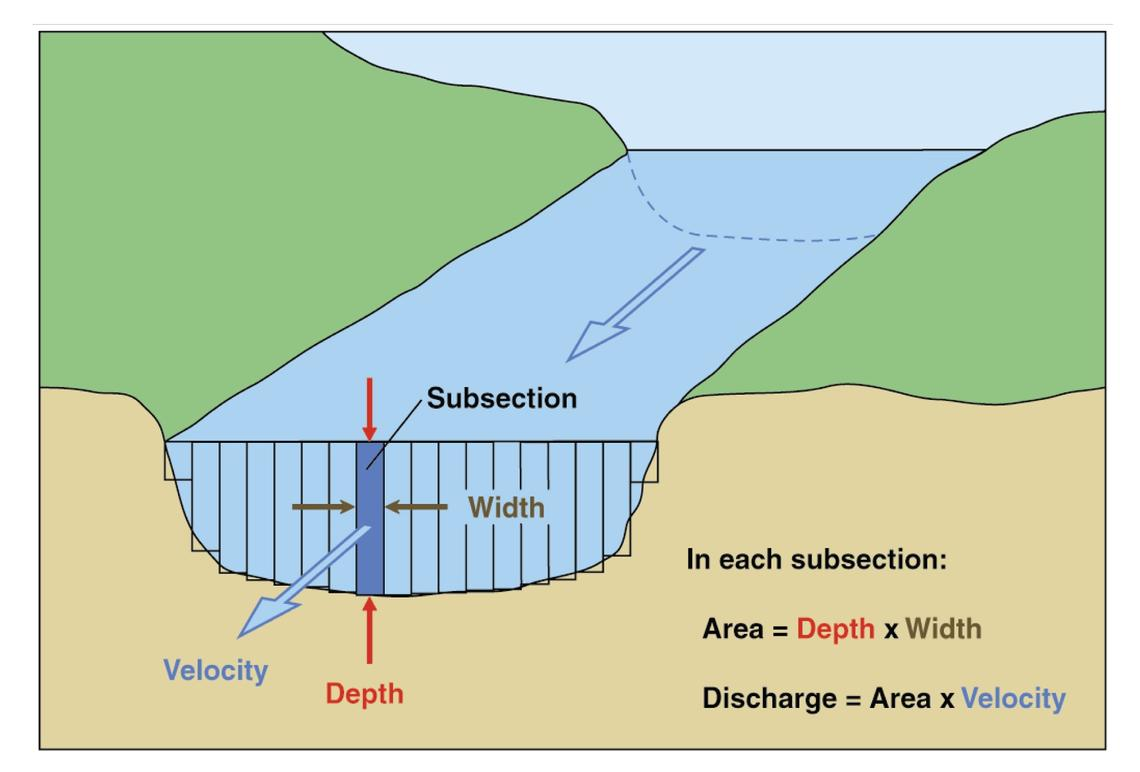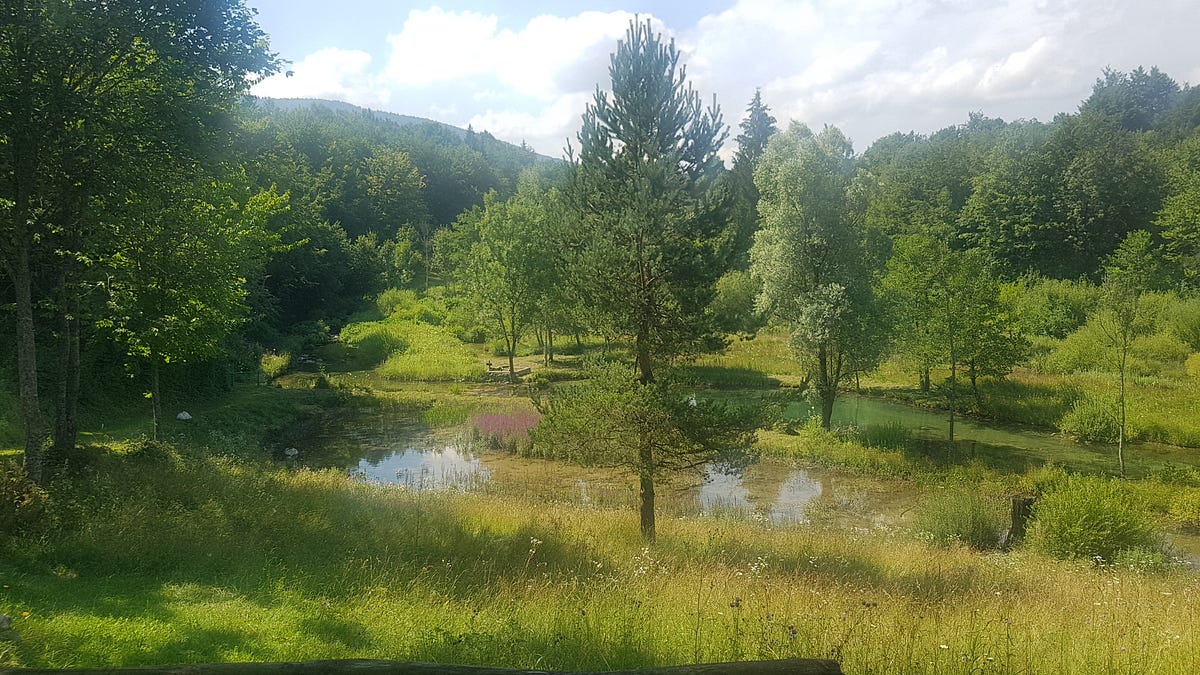Introduction
Streamflow (or discharge) describes the volume of water moving down a stream or river per unit of time, commonly measured in cubic meters per second [m³/s] or in cubic feet per second [ft³/s] in imperial units. It is probably the most important elements of the water cycle. Usually, it’s calculated by multiplying the area of water in a channel cross section with the average velocity in that particular cross section, also referred to as “velocity-area” method.
Q = A * v

Figure 1. Visualisation of the “velocity-area” method (source: [1])
In this article measurements and calculations of streamflow for the Plitvica and Sartuk streams in the Plitvice Lakes National Park, Croatia are presented. The hydrologic measurements are part of the project “Hydrogeological investigations of the subbasin of Plitvica stream in the Plitvice Lakes National park ”.
Plitvice Lakes is the oldest (proclaimed on 8 of April 1949) and largest (300 km²)national park in Croatia. It is located in in Lika-Senj County, between the Mala Kapela mountain range in the west and northwest, and the Lička Plješivica mountain range to the southeast [2]. Plitvice Lakes were internationally recognised on 26 October 1979 with their inscription onto the UNESCO World Heritage List [2]. What makes Plitvice Lakes unique is the fact that the lake system has 16 named lakes, plus several smaller unnamed ones.
#python #streamflow-measurement #nature #hydrology #national-parks
